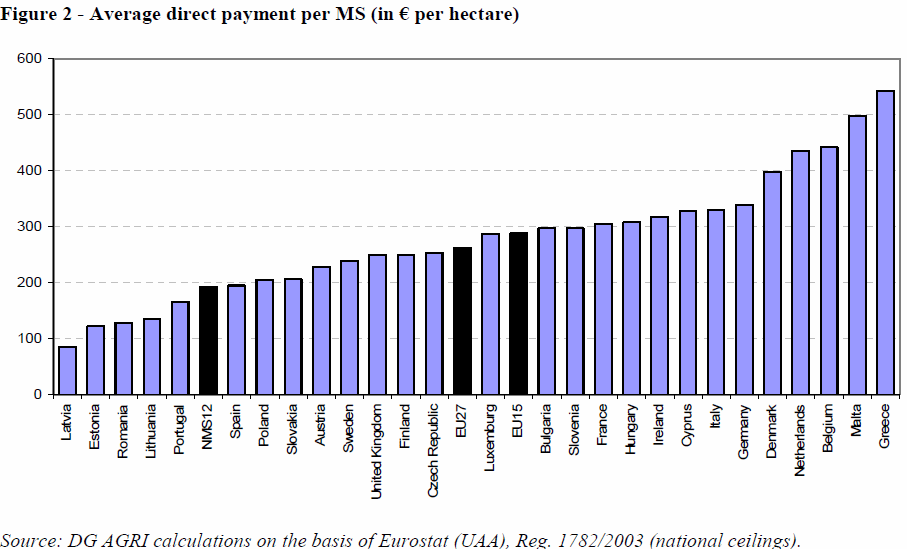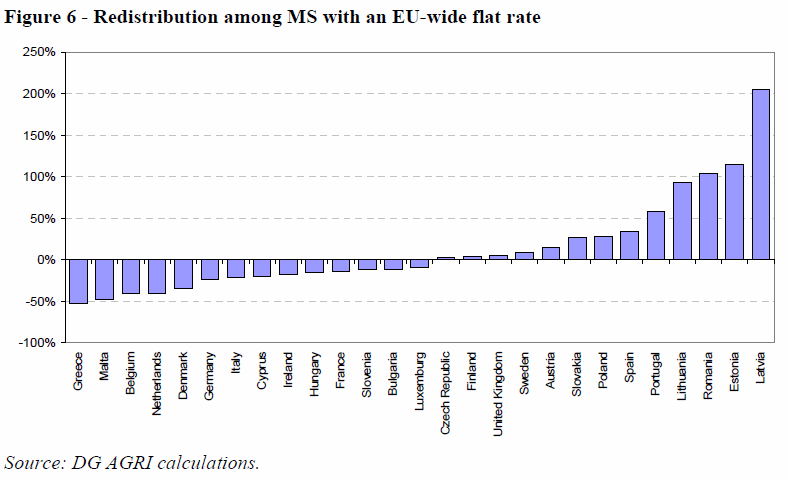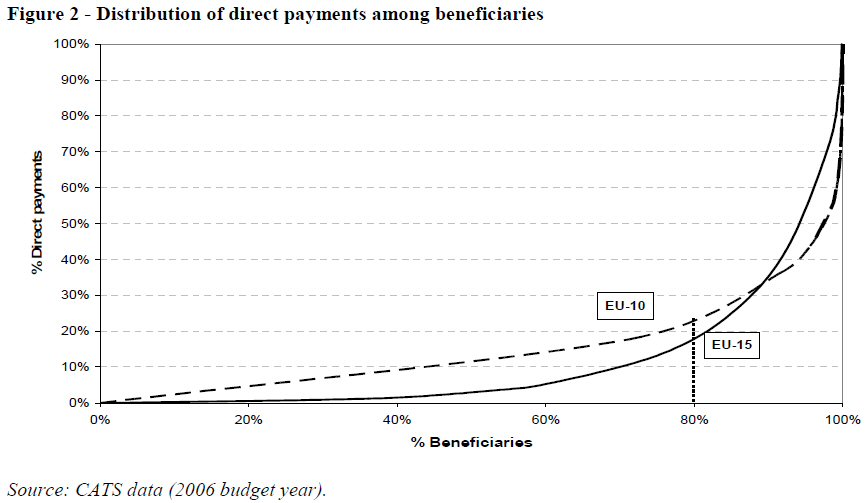A recent paper by Beatriz Velaquez from the European Commission throws light on the consequences of moving towards a flat-rate scheme for SPS payments. Drawing on the Impact Analysis for the CAP Health Check proposals and using the FADN database of farm accounts, she examines three options (a) a flat rate scheme with equal payments per hectare across Member States; (b) a flat rate scheme with equal payments per hectare within Member States; and (c) a flat rate scheme with equal payments per entitlement. Her provocative conclusion is that an EU-wide flat rate would do nothing to improve the distributional equity of the SPS payment scheme. This is important given that the only half-concrete commitment in the Presidency conclusions following the recent Agricultural Council meeting was to address the differing level of direct payments between Member States.
The starting point is that average payments per hectare (and per beneficiary) differ widely among Member States. The graph (labelled Figure 2 in the Velaquez paper) shows the distribution of expected average farm payments once all MS fully implement CAP reforms and new MS are fully integrated into the CAP (by the year 2016).
In the light of these figures, it is not surprising that a move towards an equal payment per hectare across MS would imply a very significant redistribution between countries. New member states (but also Spain and Portugal) would be the big beneficiaries, while northern Europe (Belgium, Denmark, Netherlands, Germany and France) would be the main losers. Velaquez notes that this would upset not only the delicate balance of the current Financial Perspective but would also exacerbate distortions in the new member states arising from the potential impact of the level of support on the rest of the economy.
What is interesting is that this radical change to the basis of the SPS payment would make no difference to the distribution of payments among beneficiaries. The beneficiaries themselves would change. There would be a redistribution among economic size classes of farms (payments per hectare and income per annual work unit would decrease in the largest farms and increase in the lower size classes) and among various farm types (where drystock and horticultural farms would gain at the expense of dairy and crop farms). However, there would be almost no change in the “uneven” distribution of support among farms at EU level. Velaquez explains that this is because an EU-wide flat rate payment would link the distribution of payments to the distribution of land among beneficiaries, and the distribution of land is as skewed as the distribution of production (which is the historic reference for payments).





I pointed out the political challenges associated with a flat rate payment and deveveloped some ideas about the way forward a few weeks ago:
http://capreform.eu/moving-towards-a-flat-rate-farm-payment/
If the payment is to evolve into a ‘payment for land stewarship’ as Allan Buckwell argues it should, then the payment size per hectare ought to be related to the value of each hectare in ‘environmental services provided’. This could be a headache to work out hectare-by-hectare though I suppose one could do it regionally, rather like the current definition of High Nature Value farming.
A singe per-hectare payment rate would probably be easier for the public to understand than a historic system with its basis years of 2000-2002. And that is what I think motivates those in the Commission calling for it. They fear that the current system is politically unsustainable.